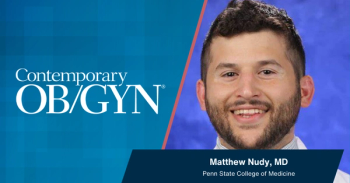
Training clinicians to improve HPV vaccination rates
The human papillomavirus (HPV) vaccine is a key intervention for a number of cancers, but the opportunity to discuss the vaccine is missed all too often. Could an online educational program help clinicians improve their HPV vaccine communication strategies?
The human papillomavirus (HPV) vaccine has been proven highly effective and has led to marked changes in the incidence of cervical cancer, among other cancers, in the United States. However, there is still room to improve the HPV vaccination rate in pediatrics. An
The investigators use the American Academy of Pediatrics Pediatric Research in Office Settings network to find 48 primary care pediatric practices in 19 states. The practices were randomized to either continue standard of care or communication training. The communication training included 3 sequential online educational modules to help clinicians communicate about the HPV vaccine as well as weekly text messages to reinforce what they had learned in the modules. The investigators looked at all 11- to 17-year-old adolescents who had a visit at 24 intervention practices and 24 control practices.
In the 24 intervention practices, 122 of 188 clinicians agreed to participate in the intervention and 120, 119, and 116 clinicians completed training modules 1, 2, and 3, respectively. In the intervention period, 29,206 teenagers had 28,123 acute or chronic visits and 15,888 well-child care visits at the intervention practices. There were 33,914 adolescents at control practices with 17,910 well-child care visits and 35 281 acute or chronic visits. Practices that had used the intervention reduced the missed opportunity to discuss the HPV vaccine by 2.4 percentage points (−2.4%; 95% CI, −3.5% to −1.2%) more than control practices. The intervention also reduced the missed opportunity for vaccine initiation during the well-child care visit by 6.8 percentage points (−6.8%; 95% CI, −9.7% to −3.9%) more than control practices. The intervention did not appear to impact missed opportunities at acute or chronic visits as well as missed opportunities to administer subsequent doses.
The investigators concluded that the intervention led to an increase in HPV vaccination, particularly during well-child care visits. The intervention is scalable and they believe that the results support widespread use of the intervention.
Reference
1. Szilagyi P, Humiston S, Stephens-Shields A, et al. Effect of training pediatric clinicians in human papillomavirus communication strategies on human papillomavirus vaccination rates. JAMA Pediatr. May 24, 2021. Epub ahead of print. doi:10.1001/jamapediatrics.2021.0766
Newsletter
Get the latest clinical updates, case studies, and expert commentary in obstetric and gynecologic care. Sign up now to stay informed.











